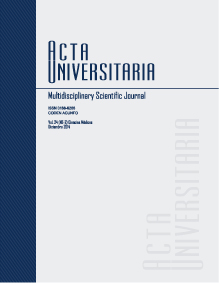Skin autofluorescence AGEs are associated with ultrasound alterations of the carotid in subjects of recent diagnosis of type 2 diabetes mellitus
Published 2015-01-12
Keywords
- Diabetes,
- complicaciones diabéticas,
- (AGE),
- enfermedades cardiovasculares.
- Diabetes,
- diabetic complications,
- AGE,
- cardiovascular diseases.
How to Cite
Abstract
Advanced glycosylation (AGEs) play an important role in development of complications of diabetes. In this work we studied the fluorescent AGEs in skin and cardiovascular risk factors in patients with newly diagnosed with type 2 diabetes mellitus (T2DM), obese (O) and normal weight (NW). A cross-sectional study was conducted in obese subjects 35 to 65 years old (n = 28) NW (n = 29). General characteristics, intima-media thickness (IMT), flow-mediated dilation (FMD) ankle-brachial index (ABI) and skin AGEs were measured. When comparing both groups, IMT was higher (p < 0.03), lower stiffness index (p < 0.02) and VMF (p < 0.02) in NW. FMD and IMT were associated with AGEs in the total group (p < 0.002, p < 0.00004, respectively) and LDL-C NW (p < 0.03, p < 0.004). The IMT is associated with AGEs (p < 0.01), Ankle-brachial index (ABI) (p < 0.015) in obese and lean AGEs (p < 0.00007), SBP (p < 0.04) and BMI (p < 0.02). IMT and VMF show strong association with AGEs in skin and LDL-C.

